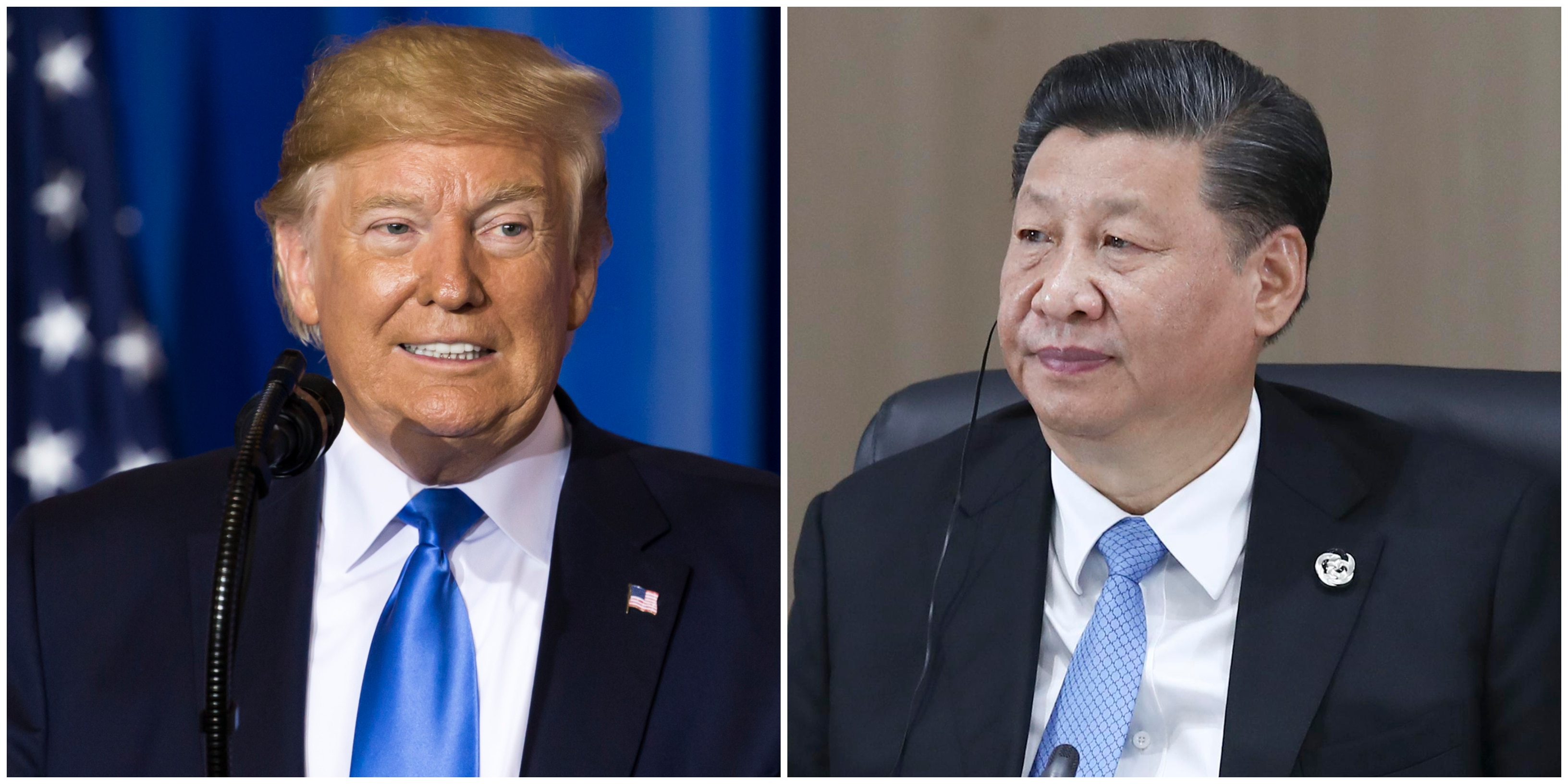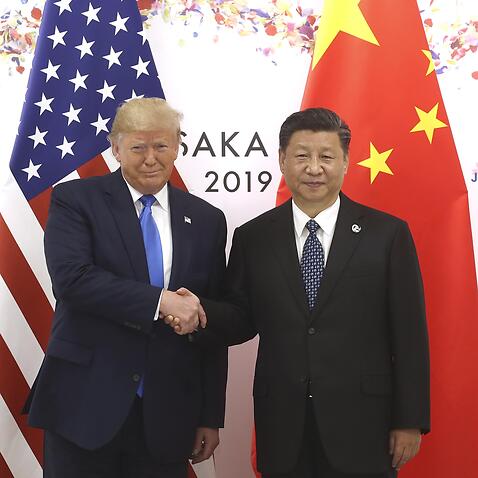For manufacturing in China, ‘Elvis has left the building’
- China’s rising costs, tricky regulations and increasingly unstable geopolitical situation are forcing more manufacturers to move production elsewhere
- First and second wave of leavers underway, with more to follow, despite the prospect of a minor US-China trade truce
Published: 12:00am, 9 Jan, 2020
Updated: 4:23am, 9 Jan, 2020
Advertisement
Weeks after switching on the machines of a new production line near Bangkok, veteran manufacturer Larry Sloven has a quip for the stream of companies leaving China: “Elvis has left the building.”
After three decades of building up manufacturing bases in China, Sloven helped Capstone International Hong Kong, of which he is managing director, wind one down. Costs were rising before the
trade war
, but a 25 per cent tariff on the lighting products the company exports back to the United States helped accelerate a shift that was set in motion 18 months ago – moving its production base to Thailand.
Now, despite the fact that lead time to hit the shelves in US stores can take up to 40 days from Thailand, almost twice as long as from China, few retailers are willing to pay the premium price that needs to be charged to keep production in Guangdong.
“Even if the tariffs went away tomorrow, most people are not coming back,” he said. “But I do not believe that most retailers in America understand this process of what a supplier must go through. Nobody will pay the price.”
Even if the tariffs went away tomorrow, most people are not coming back. But I do not believe that most retailers in America understand this process of what a supplier must go through. Nobody will pay the price
Larry Sloven
This is a situation playing out in boardrooms around the world, as international companies accept the reality that the US-China phase one trade deal will not materially improve the lay of the land for their Chinese-based operations.
Advertisement
Rising labour and environmental costs, a head-spinning regulatory environment, the ever-looming threat of more and higher tariffs, along with a sharp increase in the perception of risk associated with living and working in China mean that the
manufacturing exodus
that began at the tail end of the last decade will continue well into this one.
There is acceptance that the “Goldilocks Zone” provided by China’s industrial heartlands for the last 30 years – in which the mixture of costs, quality, human resources and infrastructure was just right – will not be matched in India, Indonesia, Malaysia, Mexico, Thailand, Vietnam or anywhere else.
“This is the right stepping stone, just the start,” Sloven said of Thailand. “I believe that Vietnam is already full, it's like having a ticket at a bakery, you have to wait in line. Right now, there's no line in Thailand, but it will get full.”
As a direct result of trade war tariffs, China has fallen behind Mexico and Canada to become the US’ third largest trading partner. Before the trade war, it was number one.
Tariffs saw China’s trade in goods surplus with the US fall by 7.9 per cent in November, according to data released by the US Census Bureau on Tuesday. This was amid a 20.84 per cent fall in Chinese exports to the US from a year earlier, including items like cellphones. US purchases of Chinese goods are now at their lowest point since March 2013.
At the same time, the US has been buying more goods from the countries to which Chinese-based manufacturers are most commonly fleeing.
Compared with June 2018, the month before the trade war began, US imports of
goods from Vietnam
have soared 51.6 per cent, Thailand 19.7 per cent, Malaysia 11.3 per cent, Indonesia 14.6 per cent, Taiwan 30 per cent and Mexico 12.7 per cent, according to
South China Morning Post calculations based on US Census Bureau data for November.
Advertisement
If there were any new year optimism about the US-China trading relationship, it is in scarce supply among foreign manufacturers in China.
“For companies exporting to the US, the entire time span of the trade war has sent the message that this isn't going to go away and that they need to rethink things,” said John Evans, managing director at Tractus Asia. Evans, who advises firms on relocating from China, said that even with the announcement of a phase-one deal, he has been getting more calls.
“There were still a number of companies sitting on the sidelines, even into the last quarter of last year, thinking there'll be a grand resolution. But in reality, it’s more of a new normal.”
This so-called new normal has helped drive a long list of big-name companies out of China, with others choosing to keep a presence but scale back operations to continue selling to the domestic market.
But for every Hasbro, Samsung, Sonos, Sharp, GoPro, Sony or Nintendo, there are a host of small suppliers being forced out due to costs, or because they are pressured to follow their major customers.
For every foreign company that left China in 2019, there were two to three more seriously contemplating doing so and we expect more companies to leave China in 2020 than in 2019
Dan Harris
“For every foreign company that left China in 2019, there were two to three more seriously contemplating doing so and we expect more companies to leave China in 2020 than in 2019,” wrote Dan Harris, founder of Harris Bricken, an international law firm working extensively in China, in a blog post.
A director at a company
supplying accessories to Apple
– who spoke anonymously because of the sensitivity of the topic – said the US tech giant had told them that they should plan to leave China if they were to be kept on as a supplier, forcing them to scout for new production sites in Southeast Asia.
Other exporters that have yet to face US trade war tariffs are making contingency plans due to rising costs and the unpredictability of exporting from China. They are not just American firms, but companies from all over the world.
Allar Peetma is the CEO of Estonian manufacturer Gerardo’s Toys, which makes rocking horses near Shanghai using moulds made in the European Union. His biggest export market is the US, and his products were due to face a 15 per cent tariff on December 15. This was postponed indefinitely with the announcement of the
phase-one trade deal
, but Peetma does not seem comforted by the truce.
US and China reach ‘phase-one’ trade deal
“Our costs are going up, but our customers want the same price, and they don’t understand that the costs are rising,” he said. “Our plan is to produce in the EU. We can use automation which can allow us to keep the costs and prices about the same. And it’s higher quality than being handmade in China. Our biggest market is the US, so tariffs are of course a worry, but other countries have high [import] taxes for China too, like Brazil and Turkey.”
Similarly, Tsutomu Aoi – a manager in the Hong Kong division of Japanese magnetic toymaker Sumaku – said that costs in their plant in the eastern port city of Ningbo have ratcheted up. For some products like action figures, the company has automated processes such as mould injection and spraying at a separate plant in Jiangmen, across the border from Macau. But should the postponed US tariffs eventually hit, production would be quickly switched to Indonesia.
“The labour costs are low, but the process is slow. Currently the US forms a small part of our exports but it is a target to grow there this year,” said Aoi. “The 25 per cent [tariff] would be expensive, that’s one of the reasons we have set up in Indonesia, to export to the US from there.”
The 25 per cent [tariff] would be expensive, that’s one of the reasons we have set up in Indonesia, to export to the US from there
Tsutomu Aoi
French scooter manufacturer Globber, meanwhile, is experiencing “15 to 30 per cent higher costs” at its Dongguan plant, in southern China, compared to its previous production base near Hangzhou in the country’s east. New tariffs would make it more expensive to export to the US.
“December 15 was good news for us,” said CEO Pascal Comte, but he is already thinking of what might come next. “In the short term, you can’t do anything [about tariffs], you have to pay the costs and it affects sales. Long term for sure, or medium term, the best option is Vietnam. It takes a while to transfer tooling, and to find operations and manpower.”
Rarely, however, is the divorce from China a clean one. Sloven at Capstone moved to a new base in Thailand with the help of a Chinese manufacturing partner that still provides many of the components used in their products. It can be a delicate balance, working with a Thai manufacturing partner to ensure that enough of the finished product is made of local content, to qualify for a low-tariff “Made in Thailand” label.
“We’ve worked out a formula that’s good for both of them so they both can stay in business,” he said. “It’s difficult to get out of China without the help of your Chinese partner.”
A year of the US-China trade war
The company needs to ship a particular form of glue from China that cannot be sourced in Thailand and will also import packaging from there.
“You would be amazed at the things that you find out. It’s cheaper to produce your packaging in China, put it on a boat, ship it to Thailand than to have a factory in Thailand produce that packaging,” Sloven said “My point is you can’t do this overnight. This is a two year process.”
Consultant Evans said that the “first wave” of companies leaving China started moving 12 to 18 months ago, while the “second wave started mid-2019”.
A brief period of armistice in the US-China relationship is unlikely to stop more waves in the future, as foreign companies continue to wean themselves off the Chinese manufacturing dream that has helped shape the global economy for the past 30 years.
 nah suck this middle finger...
nah suck this middle finger... nah suck this middle finger...
nah suck this middle finger...








